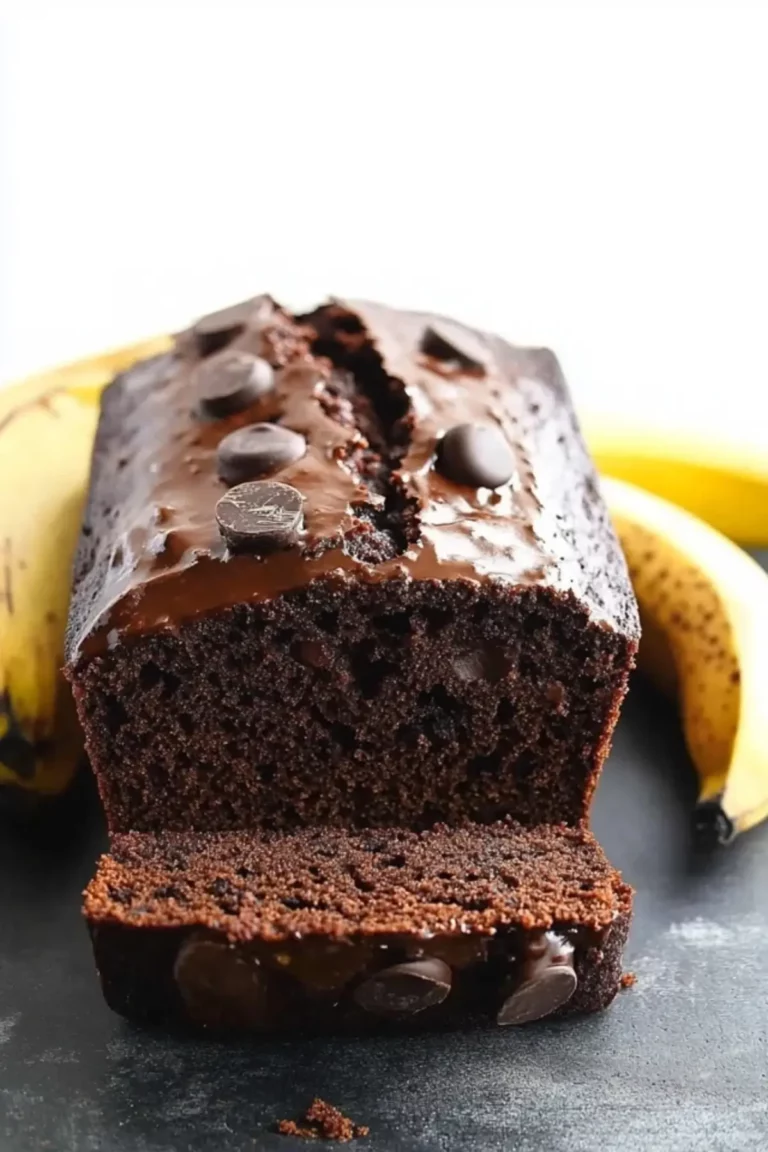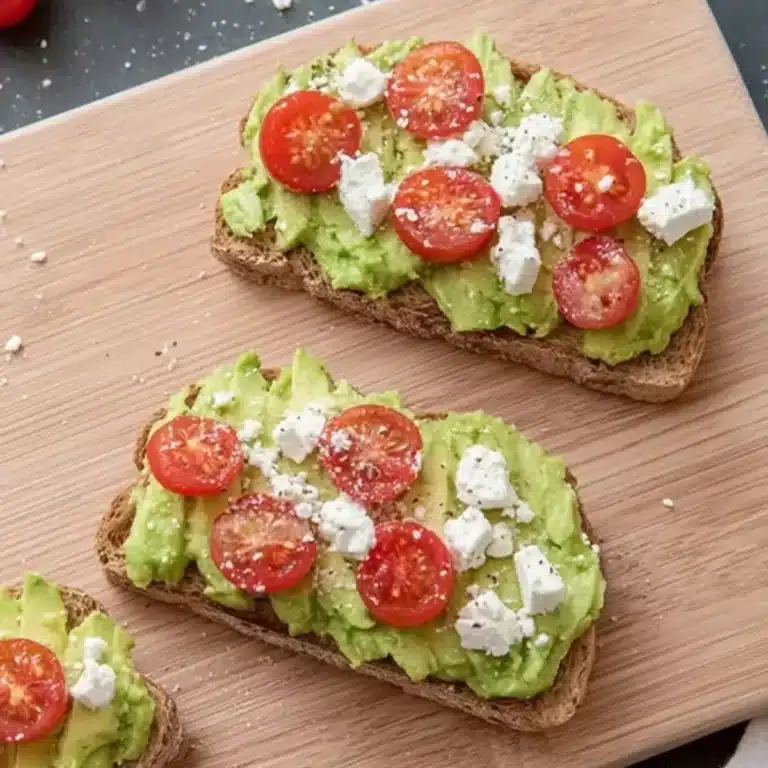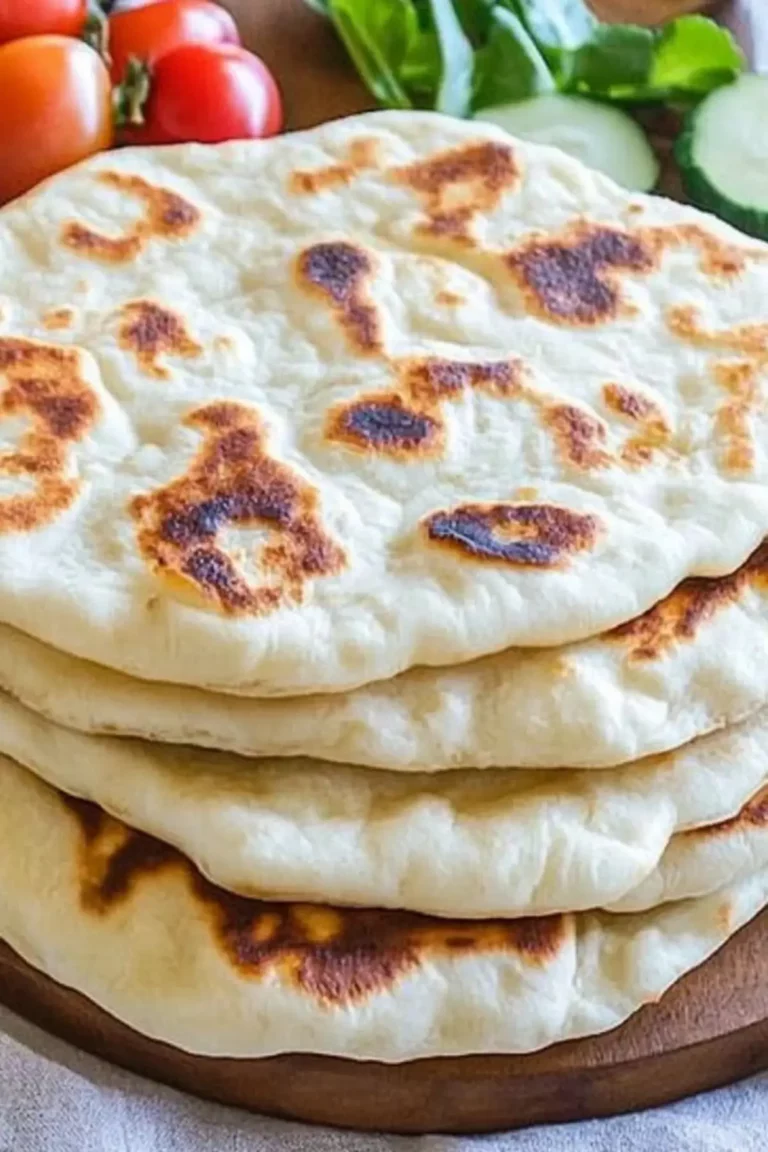There’s something magical about waking up to the smell of warm, freshly made donuts—especially when you know they came from your own kitchen. I still remember the first time I attempted making sourdough donuts at home. My hands were sticky, the dough felt fussy, and I had serious doubts. But when I pulled those golden, glazed rings from the oven, everything changed. They were soft, sweet, and slightly tangy with that unmistakable sourdough charm—better than anything from a box. And best of all? I didn’t need a deep fryer or special cutter to make them.
If you’ve ever felt intimidated by baking, this Sourdough Donut Recipe is designed with you in mind. It’s a fantastic project for beginner bakers because it uses simple techniques, includes built-in flexibility, and introduces you to the wonderful world of sourdough fermentation—all while delivering a treat that’s light, fluffy, and wholesome. Whether baked or fried, these easy sheet pan donuts make a quick and healthy meal option for breakfast or a weekend indulgence.
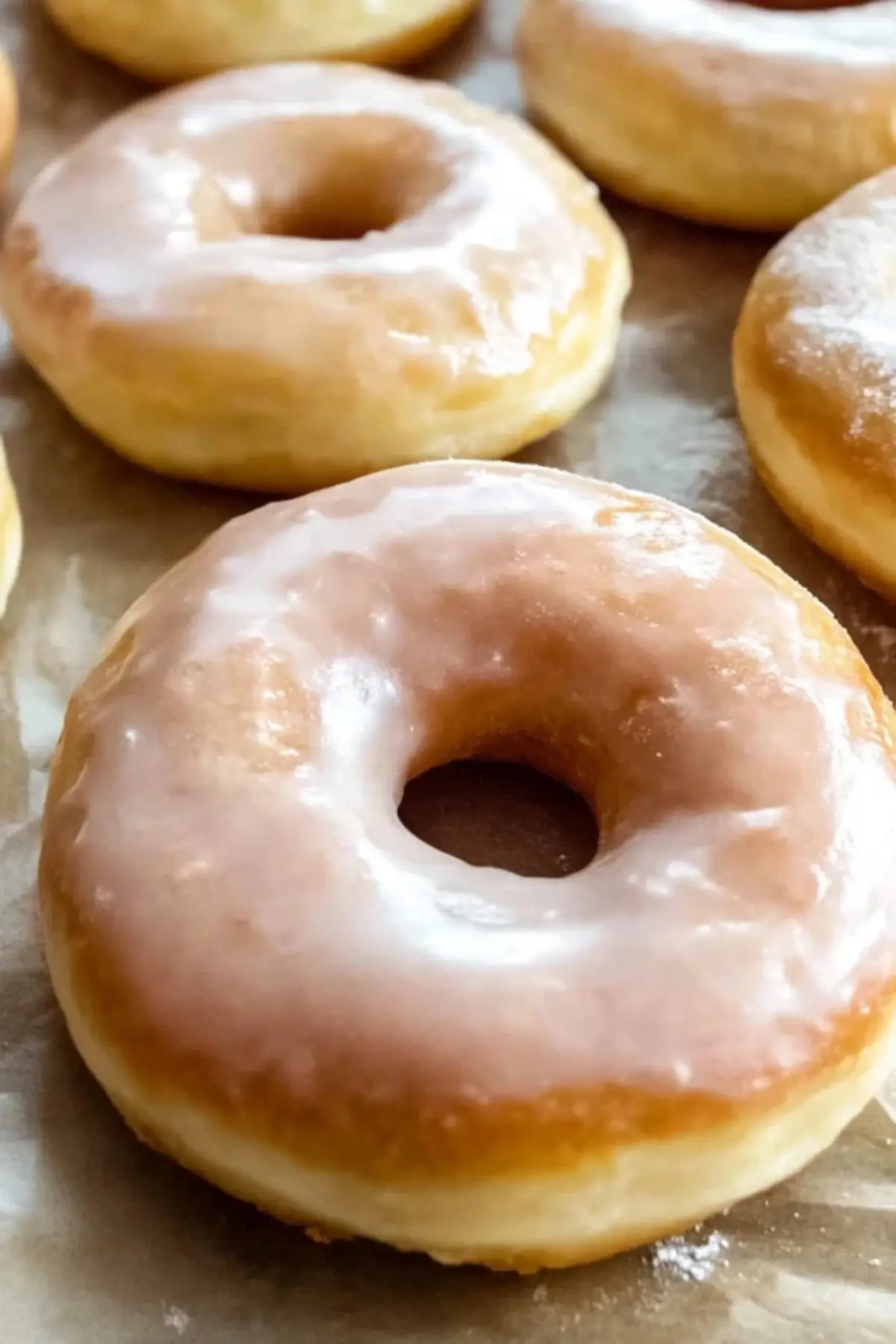
Why This Recipe is Special
Sourdough Donut Recipe bring together the nostalgia of traditional donuts with the benefits of slow fermentation. Using a sourdough starter instead of commercial yeast gives these donuts a delicate tang and makes them easier to digest. They’re not just tasty—they’re surprisingly nourishing, especially when you opt for high-quality ingredients like organic flour, full-fat milk, and real vanilla. What’s more, the dough can be shaped with simple tools and prepared the night before, making this lemon herb chicken-level easy for busy households.
Ingredients and Preparation
Sourdough Starter
Acts as the natural leavening agent, creating airy texture and a mild tang. Also supports gut health through fermentation.
Alternative: If you don’t have a starter, you can substitute with a packet of active dry yeast (adjust rise times accordingly), though it won’t have the same depth of flavor.
Milk
Adds moisture and richness to the dough.
Alternative: Use any milk, including dairy-free options like almond or oat milk.
Egg
Provides structure and richness, helping the donuts stay soft and fluffy.
Alternative: A flax egg can be used for a vegan version, though results may vary slightly.
Sugar
Gives the donuts a light sweetness and helps with browning.
Alternative: Try coconut sugar or maple syrup for a less refined option.
Butter
Enhances flavor and contributes to the tender texture.
Alternative: Coconut oil or vegan butter works well for dairy-free bakers.
Vanilla Extract
Deepens the aroma and complements the glaze.
Alternative: Almond extract or citrus zest for a twist.
Salt
Balances the sweetness and strengthens the dough structure.
Alternative: Sea salt or kosher salt; avoid iodized salt for best flavor.
Bread Flour
Offers the protein needed for good gluten development, resulting in fluffy, structured donuts.
Alternative: All-purpose flour can be used but expect stickier dough.
Powdered Sugar & Milk (for glaze)
Creates the signature donut glaze that hardens just enough to give that delightful first bite.
Alternative: Use a drizzle of honey, melted chocolate, or a citrus glaze for variety.
Step-by-Step Instructions
Step 1
In a large mixing bowl, whisk together your sourdough starter and milk until well combined. Add the egg, sugar, melted butter, and vanilla extract. Mix thoroughly. Then sift in the flour and salt, stirring until you get a smooth, soft dough.
Step 2
Cover the dough with a damp cloth and let it rest for 30 minutes. This rest allows the flour to hydrate. Afterward, knead the dough with a stand mixer on medium speed for about 12 minutes until it pulls away from the bowl sides. If kneading by hand, perform three rounds of stretch-and-folds over 90 minutes.
Step 3
Cover the bowl again and allow the dough to rise overnight at room temperature (about 8–10 hours). It should double in size and feel airy when ready.
Step 4
The next morning, lightly flour your surface and roll the dough to about ½-inch thickness. Use a cookie cutter or even a glass to cut out rounds, then make the donut hole using a bottle cap or your fingers.
Step 5
Place shaped donuts on a parchment-lined baking sheet, spaced 2 inches apart. Cover loosely with a cloth and let them rise for another 1–2 hours, or until they puff up noticeably. To speed this up, place the tray in a turned-off oven with the light on or set the oven to its lowest temp and crack the door.
Step 6
To bake: Preheat your oven to 350°F. Bake for 13–15 minutes or until lightly golden.
To fry: Heat 1–2 inches of coconut oil in a pan to 350°F. Carefully add donuts, cook for 1 minute per side, and transfer to a paper towel-lined rack.
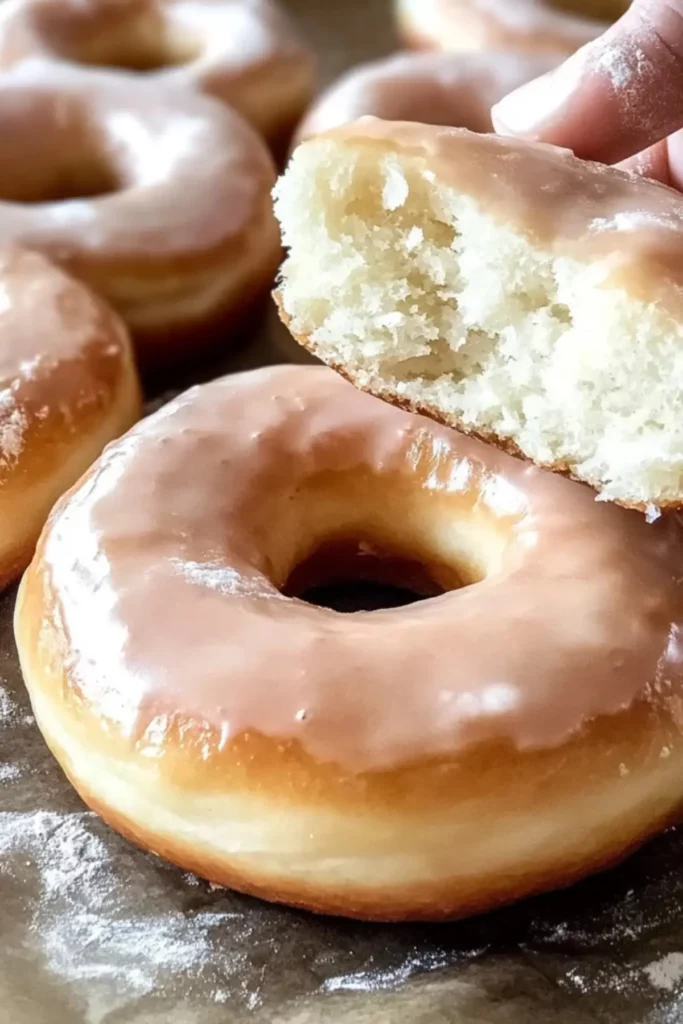
Step 7
For the glaze, stir together powdered sugar and milk until smooth and slightly runny. Dip the tops of the warm (but not hot) donuts and place glazed side up on a cooling rack to set.
Beginner Tips and Notes
- Sticky dough? Add a touch more flour during rolling, but resist over-flouring to keep them tender.
- Dough won’t roll out? Let it rest 10 minutes and try again. It needs time to relax.
- No donut cutter? Use a biscuit cutter or glass, and make the hole with a bottle cap or your fingers.
- Avoid soggy donuts: If frying, drain them well and let them cool before glazing.
- Overbaked? Brush with a bit of melted butter and warm them slightly before serving.
Serving Suggestions
These glazed Sourdough Donut Recipe pair beautifully with a hot cup of coffee or tea. Add fresh fruit on the side for a balanced breakfast or brunch option. For a festive twist, sprinkle with cinnamon or drizzle with chocolate.
Leftovers can be stored in an airtight container at room temperature for up to two days. To refresh, pop them in a warm oven for 5 minutes or microwave for 10 seconds.
Conclusion
Making these Sourdough Donut Recipe might seem like a big task, but trust me—it’s a beginner-friendly adventure that pays off in sweet, fluffy, irresistible bites. Whether you bake them or fry them, you’re going to fall in love with the balance of tang, sweetness, and that satisfying donut chew. Try them out, get creative with toppings, and don’t forget to share your donut victories (and photos) in the comments below. Let’s make baking less intimidating and a whole lot more fun—one glazed donut at a time.
FAQ About Sourdough Donut Recipe
Q1: Can I make glazed sourdough donuts without a donut cutter?
Yes, absolutely. You can use a round glass or cookie cutter for the outer ring and a bottle cap or your fingers to shape the center hole.
Q2: Do I have to fry these donuts, or can I bake them?
You can do either. Baking is a great option for a lighter version, while frying gives a more traditional, golden exterior. Both turn out delicious.
Q3: How long can I store sourdough donuts?
Store them in an airtight container at room temperature for up to 2 days. To refresh, warm in a microwave for 10 seconds or in the oven for 5 minutes.
More Relevant Recipes
Print
Sourdough Donut Recipe
- Total Time: 10-12 hours
- Yield: 12 donuts 1x
- Diet: Vegetarian
Description
These light, fluffy Sourdough Donut Recipe are a beginner-friendly recipe that can be baked or fried. Naturally leavened with sourdough starter and topped with a simple glaze, they offer a perfect blend of sweetness and a slight tang.
Ingredients
- 1 cup sourdough starter (100% hydration)
- 1/2 cup whole milk
- 1 large egg
- 1/4 cup raw cane sugar
- 1/4 cup melted unsalted butter
- 1 tsp vanilla extract
- 1 tsp salt
- 2 1/4 cups bread flour
- 1–3 cups coconut oil (for frying)
- 2 cups powdered sugar (for glaze)
- 1/4 cup whole milk (for glaze)
Instructions
- In a large bowl, whisk together the sourdough starter and milk until fully combined. Add egg, sugar, melted butter, and vanilla, mixing well.
- Sift in flour and salt, then stir until a smooth dough forms. Cover with a damp cloth and rest for 30 minutes.
- Knead in a stand mixer on medium speed for 12 minutes or perform three sets of stretch-and-folds every 30 minutes by hand.
- Cover the dough and allow it to rise overnight (8–10 hours) at room temperature until doubled in size.
- Roll dough out to 1/2-inch thickness on a floured surface. Cut out donut shapes and make center holes using a bottle cap or fingers. Let scraps rest 30 minutes before rerolling.
- Place shaped donuts on parchment-lined baking sheet. Cover and let rise for 1–2 hours or until puffed up by 50%.
- For baking: Preheat oven to 350°F (180°C). Bake donuts for 13–15 minutes until golden. For frying: Heat coconut oil to 350°F (180°C). Fry donuts 1 minute per side, then drain on paper towels.
- Mix glaze by combining powdered sugar and milk until smooth. Dip slightly cooled donuts into the glaze and let set for 10 minutes before serving.
Notes
- If the dough is too sticky, add a small amount of flour during rolling.
- To speed up the second rise, place donuts in a warm oven (170°F/80°C) with the door slightly open for 15 minutes.
- No donut cutter? Use a glass and bottle cap or your fingers to shape the donuts.
- Let donuts cool slightly before glazing to help the glaze set properly.
- Store in an airtight container at room temperature for up to 2 days.
- Prep Time: 30 minutes active, plus overnight fermentation
- Cook Time: 15 minutes
- Category: Breakfast, Dessert
- Method: Baked or Fried
- Cuisine: American
Nutrition
- Serving Size: 1 donut
- Calories: 220
- Sugar: 15g
- Sodium: 150mg
- Fat: 8g
- Saturated Fat: 4g
- Unsaturated Fat: 3g
- Trans Fat: 0g
- Carbohydrates: 34g
- Fiber: 1g
- Protein: 4g
- Cholesterol: 30mg

